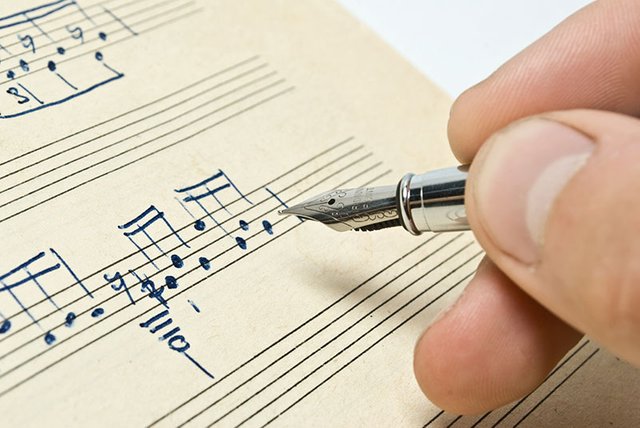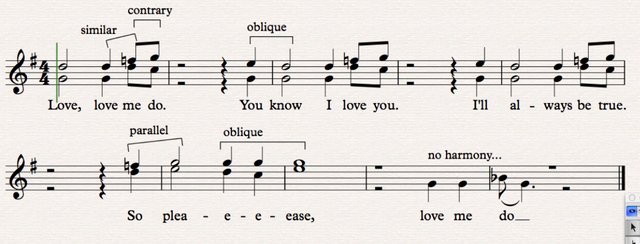MUSIC THEORY - writing harmonies
These are some small guidelines for the basics of harmony writing. I will follow up with more music theory about this.

Always look at the key, melody, intervals and outstanding notes. Balance and suspense are playing a vital role in harmony writing. The most melodies end on an 1 and rises are mostly followed by falls and vice versa.
- Start with the tonica and end with a cadence
- Limit the range of your melody till 10 steps, and most of the times within 6 (tessitura)
- Move a step (conjuct motion) or jumps (disjunct motion) of smaller intervals, so < perfect fifth
attention: consonant intervals – make suspense resolve; leading tone – move the direction after a jump bigger than 3 to fill up the emptiness – avoid more than 2 jumps (only allowed by intervals of < 3 and different direction) - Create a logical line; mostly an arch with a melodically climax
The outer voices form the skeleton in tonal music and harmony focusses almost only on the space between these voices. When voices move the same direction it is mostly with imperfect harmonic consonants (3/6). The relation between the movement of two or more voices; counterpoint or polyphony. These relationships lean on two points:
- the behaviour of consonant and dissonant intervals
- the harmony and his movement

Gradus ad Parnassum; melody is the cantus firmus
- note against note/first species/1:1 counterpoint – with the first voice called cantus firmus
- the new voice becomes contrapuntal voice in second-species counterpoint with the ration 2:1
Every melodic voice stays independent. Contrapuntal motion is the contour produced by two or more voices.
Contrary = voices that move opposite
Similar = voice that generally move the same
In similar motion, perfect intervals are not allowed because of the hollow sound; they sound as parallel, because your brain want to fill in the gaps. When the upper voice reaches the 5/8 by step instead of a jump, then you can use similar motion (coated fifth).
Parallel = voices that move the same and keep the same intervals.
Parallel movement is only allowed with 3/6s and with a maximum of three times in a row (3-3-3/6-6-6).
Mixed = these three mixed
Oblique = when one voice stays the same and the other one moves
Anti-parallel = both voices from 8 and 8 to 5 and 5, for example g-g to c-c, when they are beginning at the same g.

Because of 2:1 strong and weak parts arise, whereby the weak is allowed to be dissonant and consonant. But there is only one way how to reach a consonant by step, namely the 5-6 technique. When it keeps moving into the same direction -> consonant passing tone.
When it returns -> consonant neighbour tone.
Most of the times jumps appear at weak parts, because the strong parts with jumps break the flow.
Yours Sincerely @inMusicalTerms
with the help of The Complete Musician: An Integrated Approach to Tonal Theory, Analysis, and Listening, 3rd Edition - Steven G. Laitz
I see you dedicated your blog to music too. Since I'm a self taught kind of guy, I'm happy to get a chance to read about music from somebody studying it.
I like to hear/read that ;) right now I am in my second year of the study and a lot of subjects are hard to grasp in a short text to keep it interesting and fast for the internet followers, but I try to have as many musical subjects as possible. My next article probably will be about the theme songs of animated sitcoms since I just finished my study on it and received feedback from my teacher!